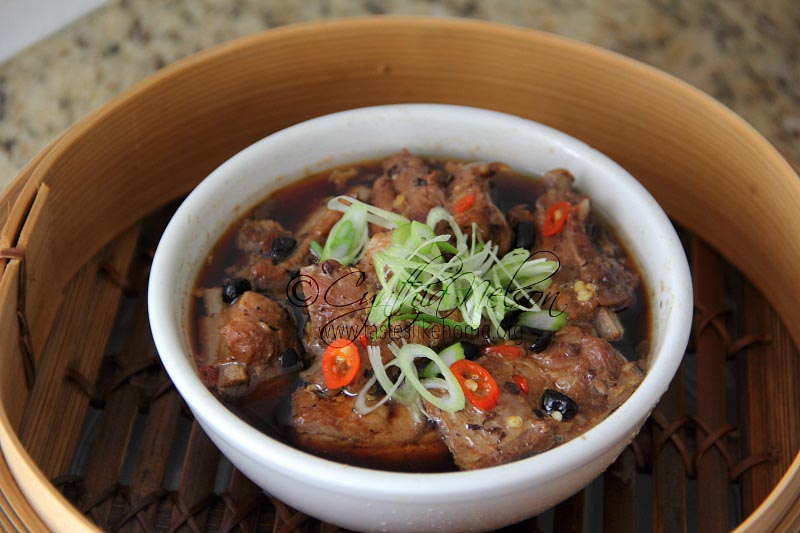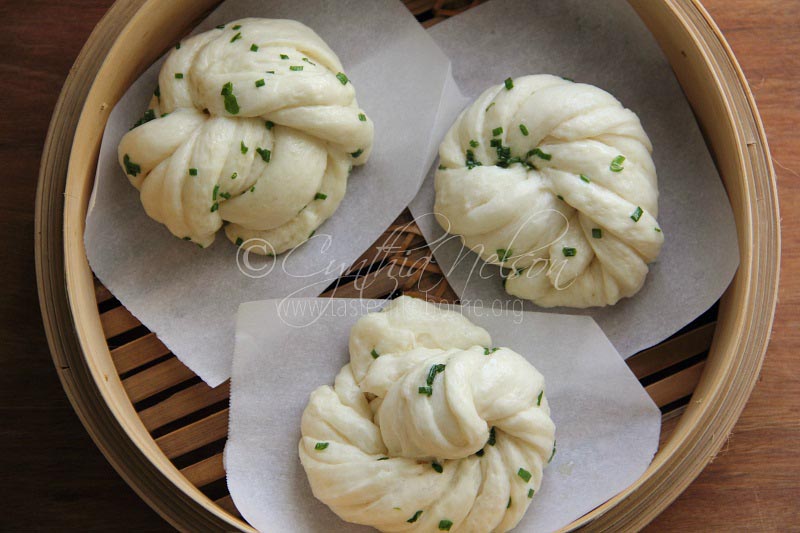Hi Everyone,

To steam, is to cook with water vapour. It is the fastest method of heat penetrating food, and that’s because of the large intense amount of steam that builds up in a covered pan or pot when water is heated and brought to a boil. What happens is that the boiling water turns into a gas that is suspended in the air, that’s the steam/vapour that circulates and penetrates food, cooking it. With this cooking method, the liquid water itself never comes into direct contact with the food.
Steaming is a cooking method often recommended if we are monitoring our sodium intake, or suffering from issues related to digestion, or if we are on some sort of health-kick diet. The reason for this is that steaming helps to maintain the nutrient content of the food and does not leach out the flavour or colour. While a lot of people think of steamed food as bland—specifically vegetables—when done properly and not overcooked to the point of mush, steaming leaves food tasting exclusively of its cooked self – okras are sweet, so too is pumpkin, ears of corn plump and full of juice, broccoli fresh and green without being grassy. But steaming is not only for vegetables, there’s more to be steamed – ripe plantains, duff, dumplings, buns, custards, potatoes, seafood (fish, shrimp, crab, lobster), chicken and pork too! Steaming is really a healthy cooking method that should not only be relegated to curing ailments, try to incorporate it regularly in to your cooking routine.
Tried steaming before and your veggies are overly soft, wet, and limp; unappealing and unappetizing? Here are some tips and advice on steaming.
- Strive for the same size and thickness of food and try to lay them evenly on the steam rack; if you have more than one layer, then pile the food close so that steam can access all surfaces.
Steamed Spareribs with Black Beans (Photo by Cynthia Nelson) - Never overcrowd the pot with food, either steam in batches or steam by stacking using steamers such Chinese bamboo steamers.
- Ensure that there is an adequate amount of water in the pan/pot that will boil providing sufficient steam for the duration of the cooking. I always err on the side of caution by adding a little more water than I need. If I am steaming in batches, a kettle of boiling water is always on standby to top-up between batches.
- Cooking time for the steaming begins after the water has come to a boil and the food is added. Do not put the food to cook while the water is cool and now heating up. When the pot comes to a boil, let it boil for a full minute then add food to steam.
- Use pots and pans with heavy or tight lids so that steam is locked in.
- Be very careful when removing the lid from the pot/pan after cooking as the steam can burn easily burn you.
- Generally, when steaming, the heat is set to high and involves quick-cooking ingredients, however, there are certain foods that need time for fibres and tissues to breakdown to become tender, for example, when cooking ribs in black bean sauce. In cases such as these, the heat can be reduced to medium or a little lower for slower cooking.
Scallions Buns prepped for steaming (Photo by Cynthia Nelson)
- When checking on the doneness of food, remember that each time you open the pan/pot the steam escapes and will talk a few minutes to build up when you re-cover.
- The state of doneness for steamed foods is really a matter of personal preference; vegetables can be cooked through without being so soft that they cannot hold their shape or be easily removed from the steamer. When I test for okra, broccoli and cauli flower, I want there to be a slight resistance when a knife is inserted. When the corn turns bright yellow I know it’s done. Custards will rise all around, rip plantains will have their skins partially split and fish will flake easily. Duff, dumplings and buns will swell.
- When your food is done cooking, especially vegetables, remove them immediately from the heated environment. Leave them on the steaming rack and transfer them to a counter to cool just before serving, this will ensure that they do not continue to cook and will maintain the rich bright colour of green, yellow, orange or whatever the colour is of the vegetable you have steamed. If you simply shut off the heat, they will continue to cook (remember the hot water is still in the pot/pan and even if you drain off the water, when you put the food back into the heated pot/pan, the residual heat will continue to cook the food).
- A word of advice to eateries serving steamed vegetables at buffets – always undercook the vegetables so by the time they are transferred to the warming trays they will finish cooking. Do not put out all the steamed vegetables at once, replenish regularly, oh and do not completely cover the tray, let the cool ambient air keep the food from overheating and overcooking (remember you have a lit burner beneath the warmer that will cause steam to build up in a closed pan).
- Subtle flavour can be added to steamed foods by adding herbs and or spices to the water or you can lay herbs on the steaming rack and place the food on top of it.
- Cook puddings, savoury pastes etc by wrapping them in banana leaves (think Conkies, Pastelles), cabbage leaves or corn husk and steaming.
- Finally, perk up your steamed veggies with a squirt or two of fresh lime or lemon juice, a light sprinkling of salt and black pepper (freshly ground if you can). YUM!
Cynthia







